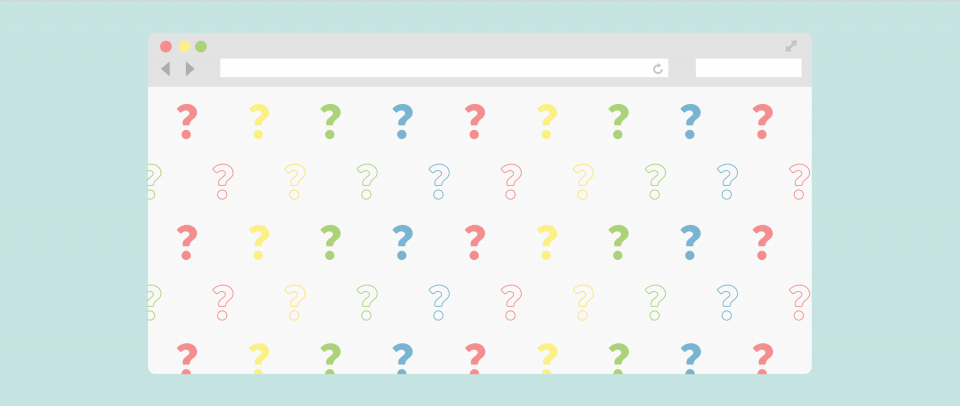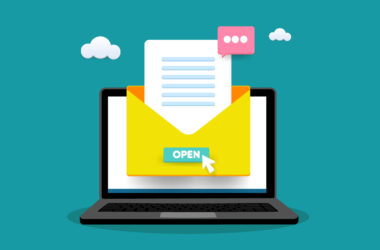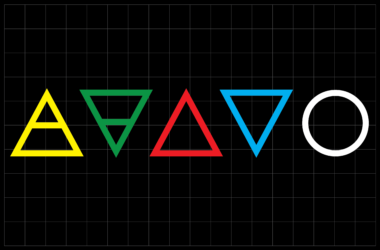Let "Why" Drive the Client Conversation
When I meet a new client, the first question I ask is “why”: “Why do you want a website?” This simple question becomes the starting point of a journey that rarely takes the path the client or I expect. There is a virtue in asking “why”, and it is one we are all too quick to ignore. So let me reacquaint you with this tiny word and the powers it can unleash.
The act of asking “why” is not just about getting an answer; it’s about creating hooks in your mind and then hanging content on them.
Spend an hour with a small child and you’ll start feeling like a human encyclopedia. As children we learn to understand the world by asking questions: Why is the ocean dark when I can see through a glass of water? Why are elephants big? Why are ants small? Why is the sun bright and why does it disappear at night? The act of asking “why” is not just about getting an answer; it’s about creating hooks in your mind and then hanging content on them.
There is a common allegory that describes knowledge as a group of objects placed in a random order and experience as the same objects connected together in a system. This goes only part way in explaining how humans understand the world. Yes, knowledge can be described as holding pieces of information in your head, and experience can teach you how the pieces connect, but this does not mean you understand why they connect. And it’s only in the understanding of why you can really use your experience and knowledge to their full extent.
But asking “why” is not just about connecting experience and knowledge. It is about understanding and entering into a meaningful discourse. It’s the engine driving the core of creative work: The pursuit of curiosity. We need to take “why” back and make it the cornerstone of the creative process.
Asking the tough questions
In the first meeting with a client you are usually the one answering questions: “How can we make this work? How do we get customers to the site? When can we have a prototype up and running? When can we expect a finished result? Are you able to stay within budget? Can this be done?”
What we need to do is take charge of the conversation before this line of questioning is allowed to begin. Whether you are a designer, a developer, an information architect, you are brought in because of your expertise and your job is to guide the client to the best solution. However counterintuitive it may seem, your client will rarely, if ever, have a full understanding of what she wants, what her business needs, and foremost what her target audience is looking for.
Your primary job as a creative contractor is to find the answers to these questions and tailor a solution to solve them. Your primary job is to challenge your client by asking “why”.
“Why do you want a website?”
When I meet a new client the first question I ask is “why”: “Why do you want a website?” That is how I opened this article and it bears repeating. And it applies to any creative project, not just websites. The question “Why do you want [product/service]?” should be the starting point of any conversation about creating something new because its answer will inform the project as a whole.
More often than not the initial answer to the question will be that the website is a means to an end: To get more clients. To boost interest. To sell more product. And this is true on a superficial level. A website, or app, or ad, even the product or service your client sells are all created to get more clients, boost interest, and sell more products. This is not why you want a website. This is one way to measure the success of that website. To find the “why” you have to encourage your client to dig deeper.
If we follow the mind of a child, this means answering questions about why the company does what it does and how it solves problems and provides solutions that are better. This means finding the core principle that guides your client and her company: Why do you do what you do?
A great example of a company that answered this question before building their web solution is Netflix. The company was around long before it became a streaming service and their original business model was mail-based DVD rentals. Their answer to the question “Why do you want a website?” is spelled out on the front of their landing page:

Netflix wanted people to be able to “Watch TV shows and movies anytime, anywhere.” Once this “why” was established it paved a clear path through the “how” – streaming video content over the internet – to the “what” – providing a video library online available at the click of a button.
Pursuing the cause of your clients’ desire to have a website built may seem like shooting yourself in the foot, but once the conversation starts and answers are uncovered, it will educate the process and the result and lead to better solutions for everyone.
“Why would your customer visit your website?”
The primary concern of any business owner is sustaining a steady stream of paying customers. To most business owners, this means doing whatever it takes to get noticed and get people through the door. So when I get brought in on a project, it is usually with the intent of building something on the web that will bring more people through that door.
From my client’s perspective, simply building a website will draw in hordes of new customers. It is my job to help her change her perspective and I do this by asking “why”: “Why would your customer visit your website?”
Again this applies to all projects, creative or otherwise. The theory of “build it and they will come” is little more than a sentimental movie catchphrase, and in the few cases when it does ring true, it is because the product serves the underserved and meets a previously untapped demand.
A website is less a self-replicating fish your client can feast on forever and more an advanced replicator your client can use to find new ways of reaching her customer. To do that successfully, she first has to understand what the customer wants and how to meet that demand.
An important part of answering why a customer would visit the site is realizing that your client is not the target audience.
Consider Zappos.com, a company that staked its claim on the web by selling shoes online. What Zappos realized was that people are not just looking for the right “look” when it comes to shoes. They also want the right fit.
Why would a customer visit Zappos.com? Because of the extensive customer review function on the site. In addition to the regular text-based reviews Zappos.com also asks existing shoe owners shoe-specific questions including ratings of overall quality, comfort, style and whether the shoe runs small or large.

The customer comes to the site to browse and buys on the site because of the free advice from other customers and high level of confidence provided by these reviews.
An important part of answering why a customer would visit the site is realizing that your client is not the target audience. In fact, what your client wants is often counter to what the end-user wants. This can be a hard pill to swallow. The way around the issue is by facing it head on:
Questions to ask about the customer’s experience:
- What problem is the website solving for the customer?
- What was the reason for visiting?
- How can the website inform the customer and assist in the decision making process?
- How can the website exceed expectations?
By identifying why the customer would visit the site, you learn about her motivations and that knowledge can be used to provide an empathetic experience that in turn makes the customer identify with the core values of the company.
“Why is a website the right tool for the job?”
If you talk to my clients, many will tell you that at first they felt like I was trying to dissuade them from going forward with the project. One of the early questions I ask my clients is “why”: “Why is a website the right tool for the job?”
What does a website have that another solution doesn’t? How can web technologies be utilized to solve a problem in a simpler or better or unique way? Looking at our two previous examples, Netflix and Zappos, you can clearly see that asking these questions and finding their answers creates a whole new type of service that can only happen on the web.
Rather than making a web portal for people to order movies and have them sent to their address Netflix created a video streaming service where the movie or TV show just plays when it is selected. And they also built the platform so that the website was but one of the options. You can also watch Netflix through mobile devices, cable boxes, DVD players, even TVs now ship with Netflix built in. The website was part of the solution but not the whole solution.
For Zappos.com the webiste allowed customers to access and crowdsource the knowledge of existing customers to further refine their choices and find the right shoe for them. By providing a custom platform targeted specifically at the needs of their customer base, they took what is traditionally a hands-on experience out of the storefront and into the home and added a new layer of information on top to better inform the customer. By leveraging the unique abilities of a website to receive, organize, and redistribute information from customers they changed the way people think about buying shoes, and now also clothes for the entire family.
Exploring what a website can do that cannot be done by other platforms and leveraging that potential is key to a successful web strategy. Finding that potential and guiding your client toward new and innovative solutions starts with asking “Why is a website the right tool for the job?”
Make your process virtuous by asking “why”
The job of building a website from start to finish can be done in many different ways, and most start with a focus on some form of technical aspect. That could mean a content audit, information architecture, the creation of personas or wireframes, mockups in code or in Photoshop. While all of these elements touch on the questions of why, none of them truly investigate their answers.
Asking why decisions are made and why solutions are picked is often perceived as doubt or a questioning of authority. They are not. Asking “why” is about seeking a deeper understanding and a more meaningful connection. Asking why is what helped us understand the word as children and it is what will help you understand your clients, your projects, even your own process. Asking why, and finding the answers, will make the how and the what come naturally.





